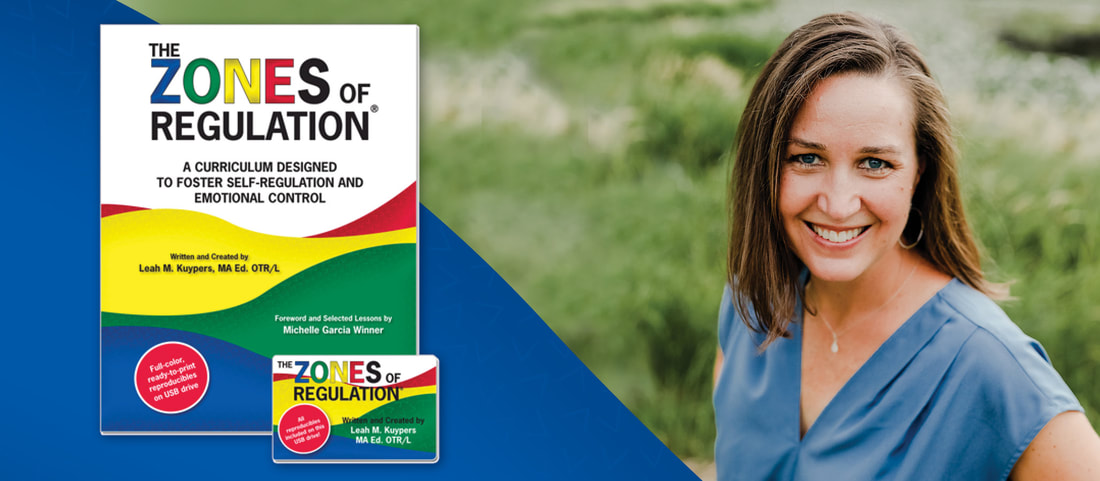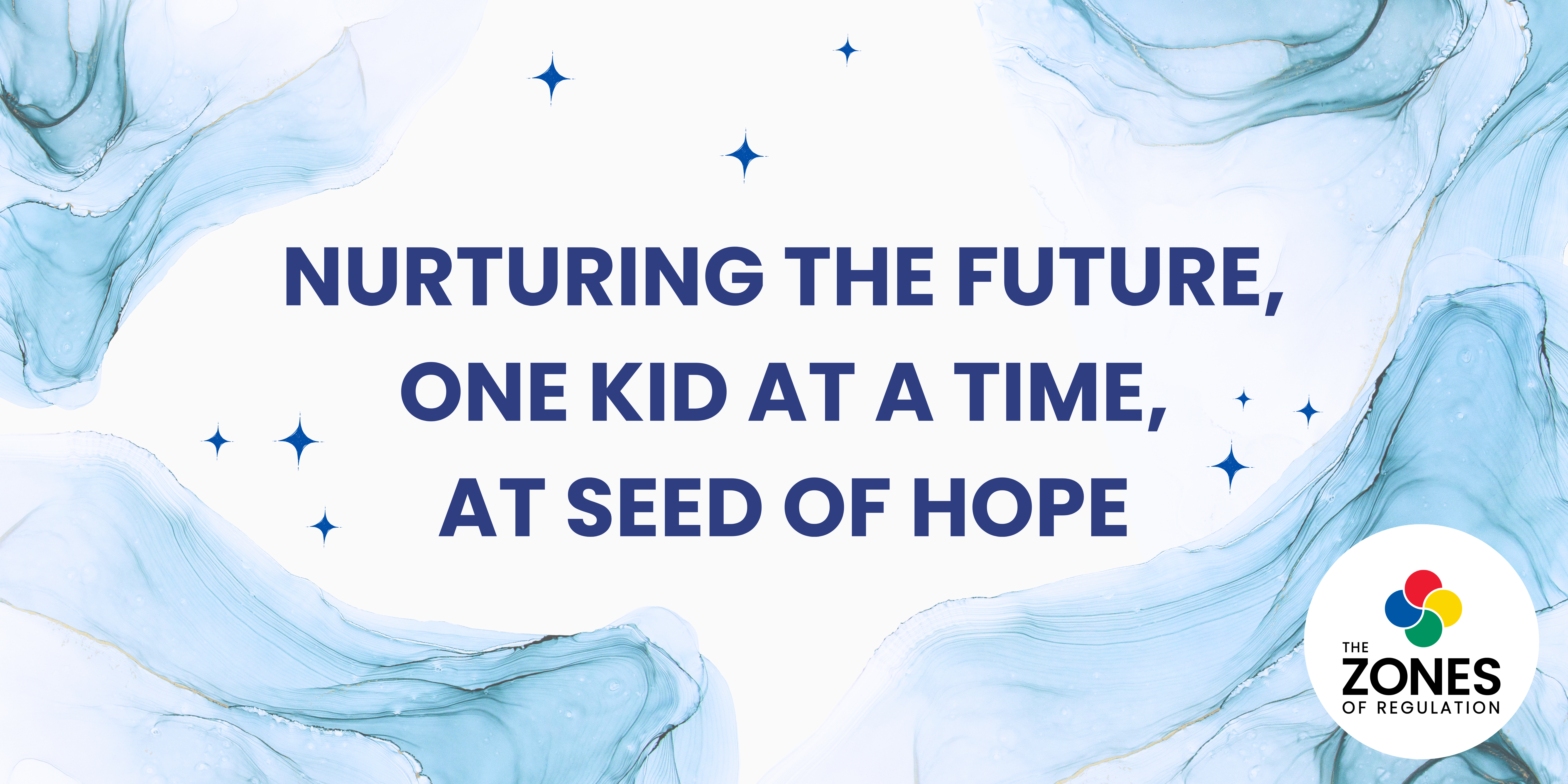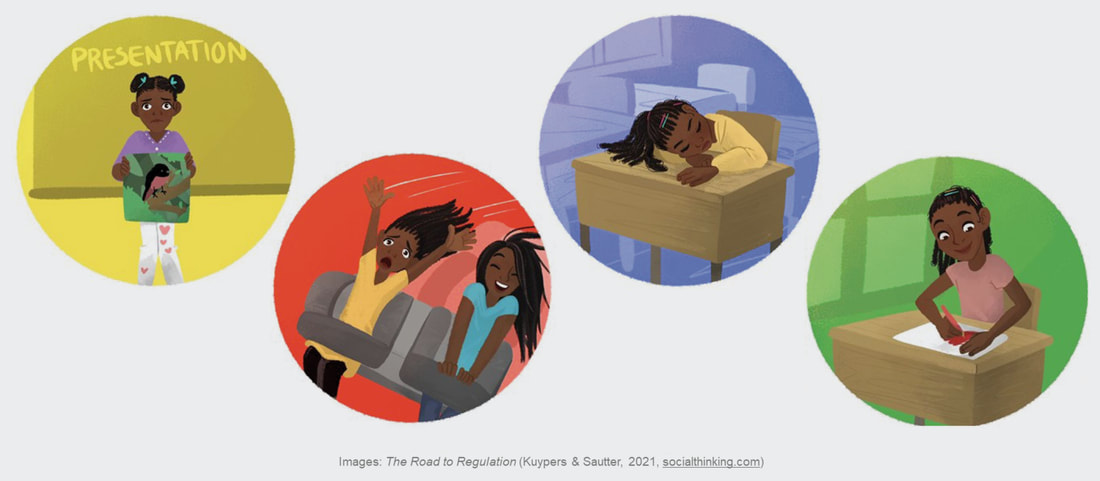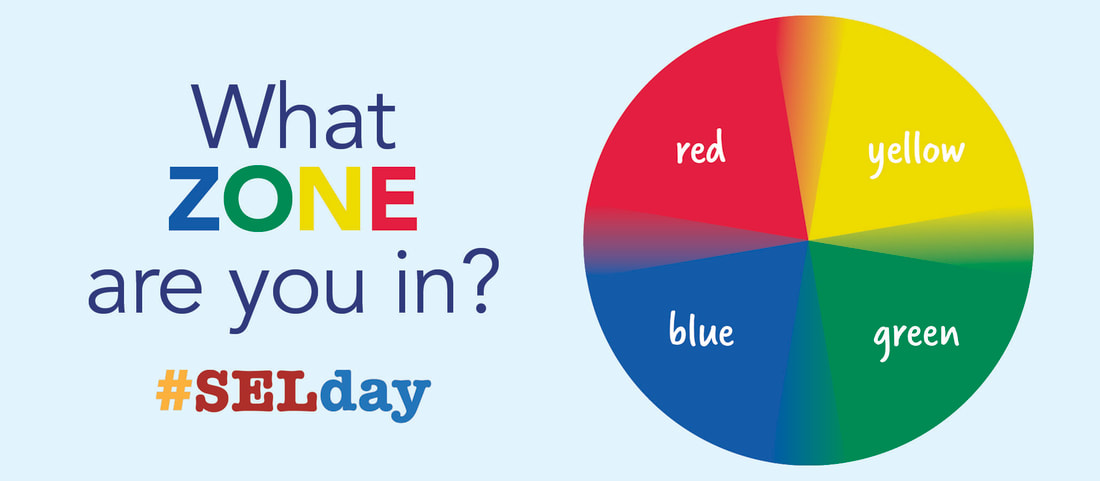A MESSAGE FROM LEAH KUYPERS CREATOR AND AUTHOR OF THE ZONES
(AND FREE COLORING PAGE DOWNLOAD!)
The journey of creating The Zones of Regulation began in classrooms around the Twin Cities of Minnesota. The students on my OT caseload were amazing kids who were often misunderstood and found themselves “in trouble” because of their differences and challenges in managing their feelings and behavior. As a staff, we found ourselves ill-equipped to take on the social and emotional needs of the students we were tasked to teach and struggled to maintain a safe learning environment for staff and students alike. In an effort to reduce disciplinary and exclusionary measures, my main goal was to offer positive and proactive instruction that truly helped my students gain an understanding of their feelings and find adaptive tools and strategies for communication, coping, and wellness. To further that, I wanted to equip myself and my colleagues with new strategies to support social emotional learning, rather than falling back on punitive measures that just weren’t cutting it…
Since the original publication of The Zones of Regulation in 2011, I have had the great privilege of observing how it has been used in classrooms, therapeutic settings, and homes all over the world. Though I was thrilled to see its widespread adoption and use, I was concerned to see some misinterpretation of my intentions and The Zones sometimes being used as a behavioral or compliance model, particularly centered around feeling in, or returning to, The Green Zone. This was never my objective. My mission is to honor all feelings and experiences people have in their bodies as well as valuing the differences in how we regulate. This approach has been reinforced as I listen, research, and carefully follow the work of thought leaders in the neurodiversity-affirming, anti-bias, and trauma-informed teaching movements and integrate best practices from them. As we all work together to implement The Zones of Regulation we can take a moment to be reminded that:
Zones are based on feelings, not behaviors. Let’s take behavior out of this equation. We determine our Zones based on our feeling, our energy, and our internal state of alertness. Our behaviors are impacted by how we manage our Zone. Each of us experience our Zones in our own, unique way, and awareness of these sensations as we relate to each Zone is something we can learn and practice.
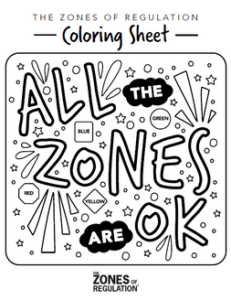
All the Zones are OK, and I really mean this.
Remembering that our Zone is based on our feelings, it’s OK to be in the Yellow Zone when you feel wiggly after recess or when your clothes just aren’t feeling quite right. It’s OK to come into the classroom in the Blue Zone when you are feeling tired or let down. It’s OK to be in the Red Zone when you feel bullied, or your body feels overwhelmed with sensory stimulation. Feelings are innate, and it is human nature to experience a wide range of feelings; this is something we all are entitled to and is integral to how we teach The Zones of Regulation. With this self-awareness we can explore healthy and adaptive tools to help us regulate with our goals, tasks, and wellbeing in mind.
The Zones of Regulation is not a compliance-based model. Period. It is a proactive teaching approach that builds awareness of the unique feelings we each have, gives us a common language for connecting and communicating these feelings, and provides us practice with tools and strategies to take care of ourselves. Any model in which learners are rewarded or praised for being in the Green Zone, or shamed for being in the Red, Yellow, or Blue Zone is a misrepresentation of The Zones of Regulation.
The Green Zone is not the goal. As adults often co-regulating with others, we can support learners in regulating their feelings and Zones with compassion, free of expectations or contingencies for being in, or returning to, the Green Zone. While the Green Zone often gives us a feeling of comfort, calm, and connectedness inside of our bodies, use of The Zones in your setting should not project any value of The Green Zone above the other colored Zones. We have evolved our language to say “taking care of our Zones,” “managing/regulating our Zones” to ensure learners don’t feel pressure to be in The Green Zone.
How we teach The Zones matters. Given that our Zones represent our feelings, the climate in which it is taught is critically important. We need to create a safe space for all learners to feel comfortable identifying and expressing (or not if they choose) their feelings and Zones, as well as using their Zones tools if and when they are ready. This work begins with the adult facilitator’s mindset and relationships with learners, as well as the materials they use to teach. I ask that you please take a second look at your visuals and reflect on the imagery and language you are using around feelings and Zones with learners. Make sure your visuals and language communicate that all The Zones are okay! When we set up a culture in which all of our feelings are valid and we all access tools to regulate, we will see successes with our learners; I’ve seen it firsthand.
My ask of you is to reflect and move forward in teaching The Zones of Regulation with integrity.
In teaching The Zones, we are building a pathway for recognizing the sensations in our bodies that alert us to our feelings, and then deciding if and how to take care of ourselves in the moment. It’s as simple (and complex) as that. Thanks for being on this journey with me and I look forward to sharing more with you down the road.
Warmly,
![]()

